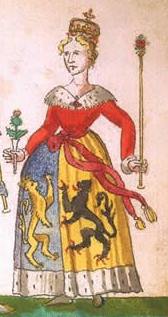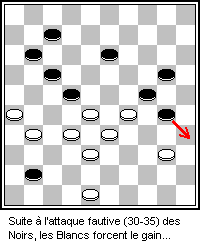|
Craigie Castle
Craigie Castle, in the old Barony of Craigie, is a ruined fortification situated about southeast of Kilmarnock and southeast of Craigie village, in the Civil Parish of Craigie, South Ayrshire, Scotland. The castle is recognised as one of the earliest buildings in the county. It lies about west-south-west of Craigie church. Craigie Castle is protected as a scheduled monument. History of Craigie Castle Craigie Castle, Gaelic Caisteil Chreagaidh, was originally built for the Lyndesay or Lindsay clan. The castle passed to John Wallace of Riccarton through marriage about 1371 as the last heir was a daughter. This line of the Ayrshire Wallaces then lived at Craigie Castle until they moved to Newton Castle in Ayr in 1588. Craigie Castle was then left to fall into ruin. It was the belief of Mrs Frances Dunlop of Dunlop, a lineal descendant of William Wallace, that he was born at his grandfather's home of Craigie Castle. William only moved away after a number of years had passed due ... [...More Info...] [...Related Items...] OR: [Wikipedia] [Google] [Baidu] |
South Ayrshire
South Ayrshire ( sco, Sooth Ayrshire; gd, Siorrachd Àir a Deas, ) is one of thirty-two council areas of Scotland, covering the southern part of Ayrshire. It borders onto Dumfries and Galloway, East Ayrshire and North Ayrshire. On 30 June 2020, the population of South Ayrshire was 112,140. Overview and history Creation and history The administrative boundaries were formed in 1996 as a direct successor to the Kyle and Carrick district council area, with the district of Dalmellington – located along the south-east of Kyle and Carrick – being transferred over to the newly formed East Ayrshire Council area. South Ayrshire's Headquarters, County Buildings, are located in Wellington Square, Ayr. The former council offices, Burns House on Burns Square and Parkhouse Street, were demolished in 2021, creating a new open space, landscaped with funding from the Scottish Government. Geography and climate Geographically, South Ayrshire is located on the western coast of Scotland, s ... [...More Info...] [...Related Items...] OR: [Wikipedia] [Google] [Baidu] |
Run Rig
Run rig, or runrig, also known as rig-a-rendal, was a system of land tenure practised in Scotland, particularly in the Highlands and Islands. It was used on open fields for arable farming. Its origins are not clear, but it is possible that the practice was adopted in the late medieval period, supplanting earlier enclosed fields which were associated with a more dispersed pattern of settlement. It fell into decline mainly over the last quarter of the 18th century and the first quarter of the 19th century. The land was divided into towns or townships, comprising an area of cultivable "in-bye" land and a larger area of pasture and rough grazing. The in-bye was divided into strips – rigs – which were periodically reassigned among the tenants of the township so that no individual had continuous use of the best land. This periodical reassignment can be considered a defining feature of run rig. The majority of townships were rented by a tacksman and sublet to the actual farming tena ... [...More Info...] [...Related Items...] OR: [Wikipedia] [Google] [Baidu] |
Battle Of Sark
The Battle of Sark, alternatively called the Battle of Lochmaben Stone, was fought between England and Scotland in October 1448. A large battle, it was the first significant Scottish victory over the English in over half a century, since the Battle of Otterburn in 1388. It placed the Scots in a position of strength against the English for over a decade, until Edward IV ascended the English throne, and it brought the powerful Douglas family to even greater prominence in Scotland. Precursors After the 14th century's Wars of Scottish Independence, England and Scotland continued to battle periodically along their borders. In 1448, hostilities escalated. Henry Percy, son of the Earl of Northumberland, destroyed Dunbar in May, and in June the Earl of Salisbury, Lord Warden of the March destroyed Dumfries. In reaction, William Douglas, 8th Earl of Douglas mustered a force with the support of the earls of Ormonde, Angus, and Orkney, destroying Warkworth and Alnwick. When the Scots adv ... [...More Info...] [...Related Items...] OR: [Wikipedia] [Google] [Baidu] |
James II Of Scotland
James II (16 October 1430 – 3 August 1460) was King of Scots from 1437 until his death in 1460. The eldest surviving son of James I of Scotland, he succeeded to the Scottish throne at the age of six, following the assassination of his father. The first Scottish monarch not to be crowned at Scone, James II's coronation took place at Holyrood Abbey in March 1437. After a reign characterised by struggles to maintain control of his kingdom, he was killed by an exploding cannon at Roxburgh Castle in 1460. Life James was born in Holyrood Abbey.Grants "Old and New Edinburgh" He was the son of King James I and Joan Beaufort. By his first birthday, his only brother, his older twin, Alexander, had died, thus leaving James as heir apparent with the title Duke of Rothesay. On 21 February 1437, James I was assassinated, and the six-year-old James immediately succeeded him as James II. He was crowned in Holyrood Abbey by Abbot Patrick on 23 March 1437. On 3 July 1449, the eighteen-ye ... [...More Info...] [...Related Items...] OR: [Wikipedia] [Google] [Baidu] |
David II Of Scotland
David II (5 March 1324 – 22 February 1371) was King of Scots from 1329 until his death in 1371. Upon the death of his father, Robert the Bruce, David succeeded to the throne at the age of five, and was crowned at Scone in November 1331, becoming the first Scottish monarch to be anointed at their coronation. During his childhood Scotland was governed by a series of guardians, and Edward III of England sought to take advantage of David's minority by supporting an invasion of Scotland by Edward Balliol, beginning the Second War of Scottish Independence. Following the English victory at the Battle of Halidon Hill in 1333, David, his queen and the rump of his government were evacuated to France, where he remained in exile until it was safe for him to return to Scotland in 1341. In 1346, David invaded England in support of France during the Hundred Years' War. His army was defeated at the Battle of Neville's Cross and he was captured and held as a prisoner in England for eleven year ... [...More Info...] [...Related Items...] OR: [Wikipedia] [Google] [Baidu] |
Craigie Castle, Ayrshire - Hall
Craigie may refer to: Places Australia * Craigie, New South Wales, see Snowy Monaro Regional Council#Towns and localities * Craigie, Victoria *Craigie, Western Australia, a suburb of Perth Scotland, United Kingdom * Craigie, Dundee, a location *Barony of Craigie, a feudal barony in Dundee *Craigie (hamlet), Perth and Kinross, a village near Blairgowrie *Craigie, Perth, Scotland, an area directly southwest of Perth * Craigie, Ayr, a location in South Ayrshire *Craigie, South Ayrshire, a small village near Kilmarnock **Craigie Castle People with the surname * Billy Craigie, Aboriginal Australian activist, one of four co-founders of the Aboriginal Tent Embassy in 1972 *Claude Craigie, Scottish footballer *Jill Craigie, British writer, filmmaker and actress *Patrick Craigie (1843–1930), British agricultural statistician *Pearl Mary Teresa Craigie (1867–1909), Anglo-American writer under pen-name John Oliver Hobbes *Robert Craigie, Lord Glendoick Robert Craigie, Lord Craigie (1 ... [...More Info...] [...Related Items...] OR: [Wikipedia] [Google] [Baidu] |
Craigie Castle Hall, Ayrshire - East View
Craigie may refer to: Places Australia * Craigie, New South Wales, see Snowy Monaro Regional Council#Towns and localities * Craigie, Victoria *Craigie, Western Australia, a suburb of Perth Scotland, United Kingdom * Craigie, Dundee, a location *Barony of Craigie, a feudal barony in Dundee *Craigie (hamlet), Perth and Kinross, a village near Blairgowrie *Craigie, Perth, Scotland, an area directly southwest of Perth * Craigie, Ayr, a location in South Ayrshire *Craigie, South Ayrshire, a small village near Kilmarnock **Craigie Castle People with the surname * Billy Craigie, Aboriginal Australian activist, one of four co-founders of the Aboriginal Tent Embassy in 1972 *Claude Craigie, Scottish footballer *Jill Craigie, British writer, filmmaker and actress *Patrick Craigie (1843–1930), British agricultural statistician *Pearl Mary Teresa Craigie (1867–1909), Anglo-American writer under pen-name John Oliver Hobbes *Robert Craigie, Lord Glendoick Robert Craigie, Lord Craigie (1 ... [...More Info...] [...Related Items...] OR: [Wikipedia] [Google] [Baidu] |
Craigie Castle, Ayrshire
Craigie Castle, in the old Barony of Craigie, is a ruined fortification situated about southeast of Kilmarnock and southeast of Craigie village, in the Civil Parish of Craigie, South Ayrshire, Scotland. The castle is recognised as one of the earliest buildings in the county. It lies about west-south-west of Craigie church. Craigie Castle is protected as a scheduled monument. History of Craigie Castle Craigie Castle, Gaelic Caisteil Chreagaidh, was originally built for the Lyndesay or Lindsay clan. The castle passed to John Wallace of Riccarton through marriage about 1371 as the last heir was a daughter. This line of the Ayrshire Wallaces then lived at Craigie Castle until they moved to Newton Castle in Ayr in 1588. Craigie Castle was then left to fall into ruin. It was the belief of Mrs Frances Dunlop of Dunlop, a lineal descendant of William Wallace, that he was born at his grandfather's home of Craigie Castle. William only moved away after a number of years had passed du ... [...More Info...] [...Related Items...] OR: [Wikipedia] [Google] [Baidu] |
Draughts
Checkers (American English), also known as draughts (; British English), is a group of strategy board games for two players which involve diagonal moves of uniform game pieces and mandatory captures by jumping over opponent pieces. Checkers is developed from alquerque. The term "checkers" derives from the checkered board which the game is played on, whereas "draughts" derives from the verb "to draw" or "to move". The most popular forms of checkers in Anglophone countries are American checkers (also called English draughts), which is played on an 8×8 checkerboard; Russian draughts, Turkish draughts both on an 8x8 board, and International draughts, played on a 10×10 board – the latter is widely played in many countries worldwide. There are many other variants played on 8×8 boards. Canadian checkers and Singaporean/Malaysian checkers (also locally known as ''dum'') are played on a 12×12 board. American checkers was weakly solved in 2007 by a team of Canadian computer s ... [...More Info...] [...Related Items...] OR: [Wikipedia] [Google] [Baidu] |



